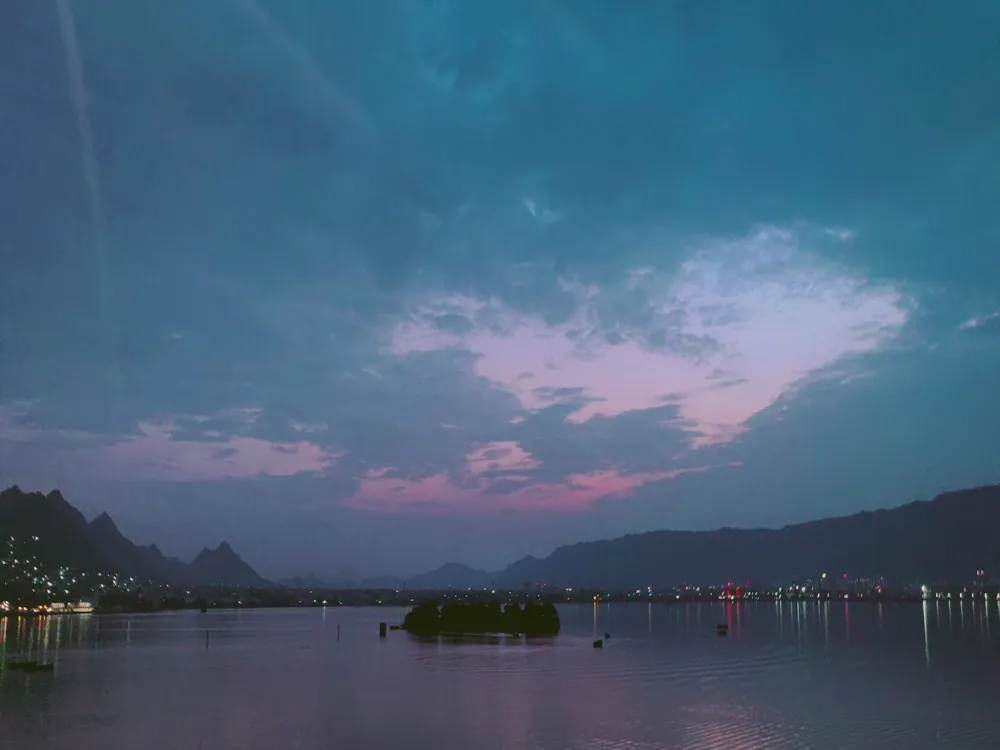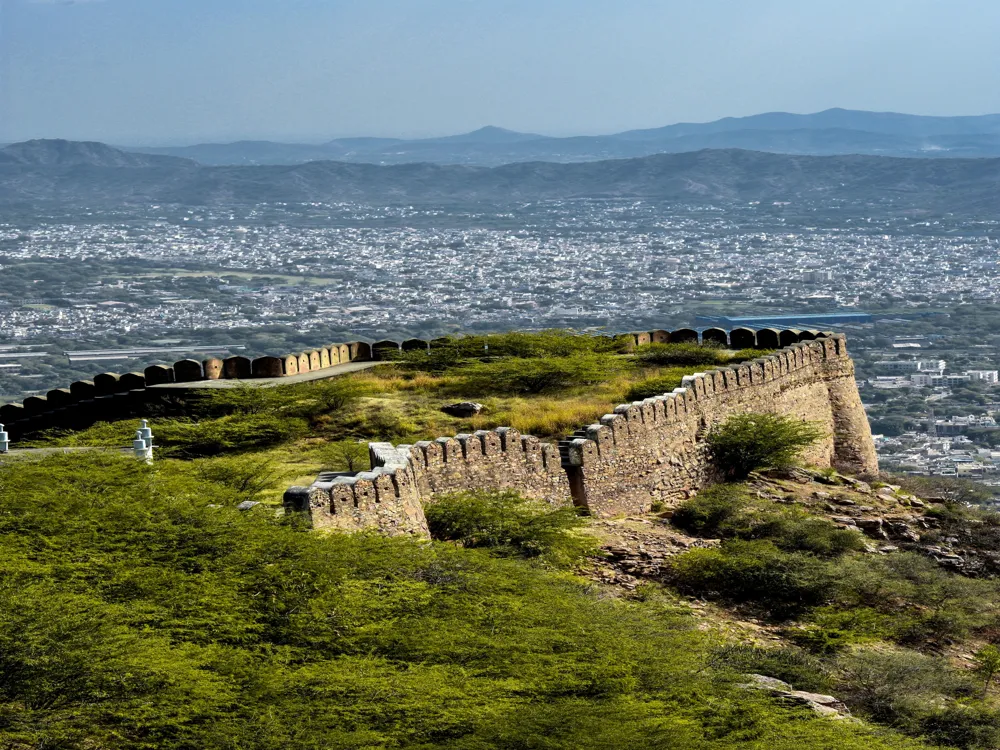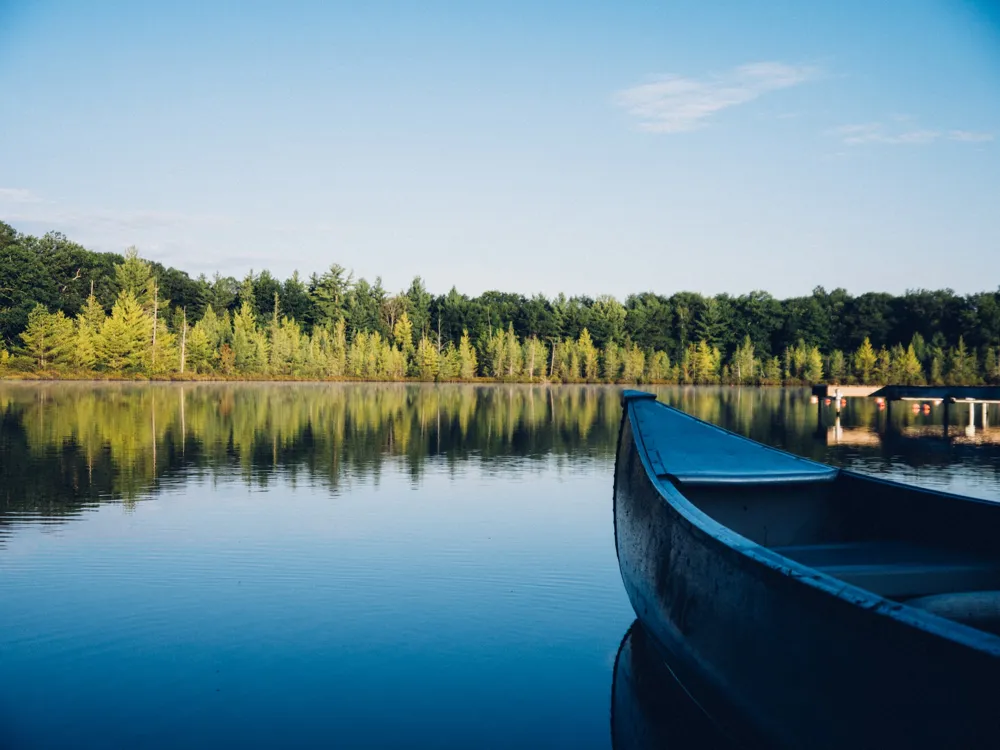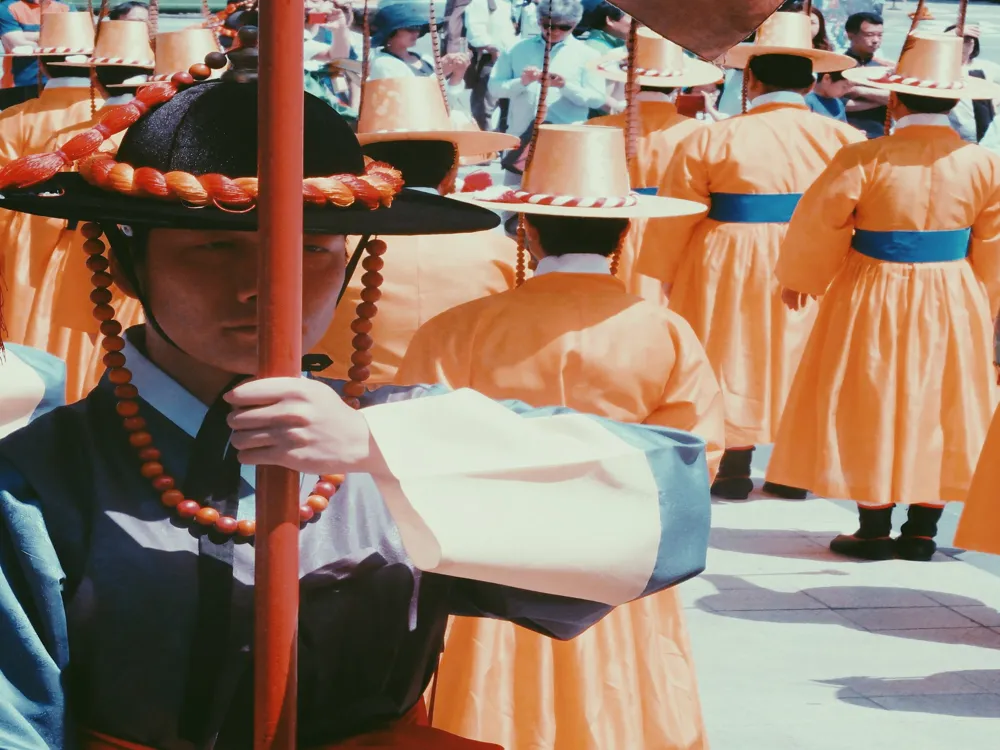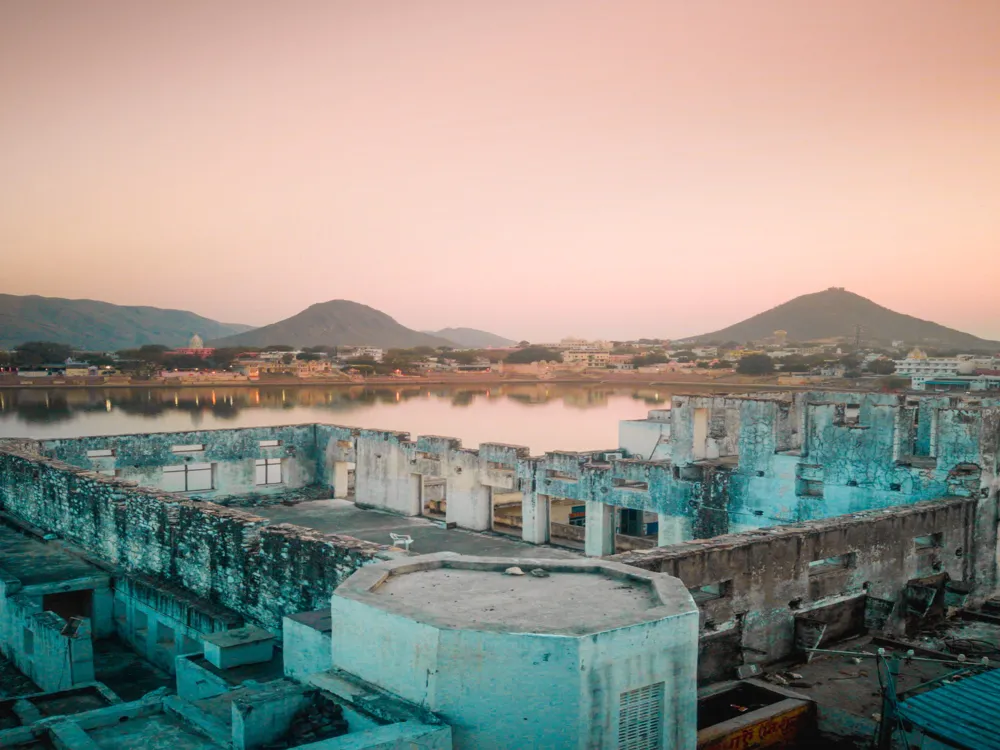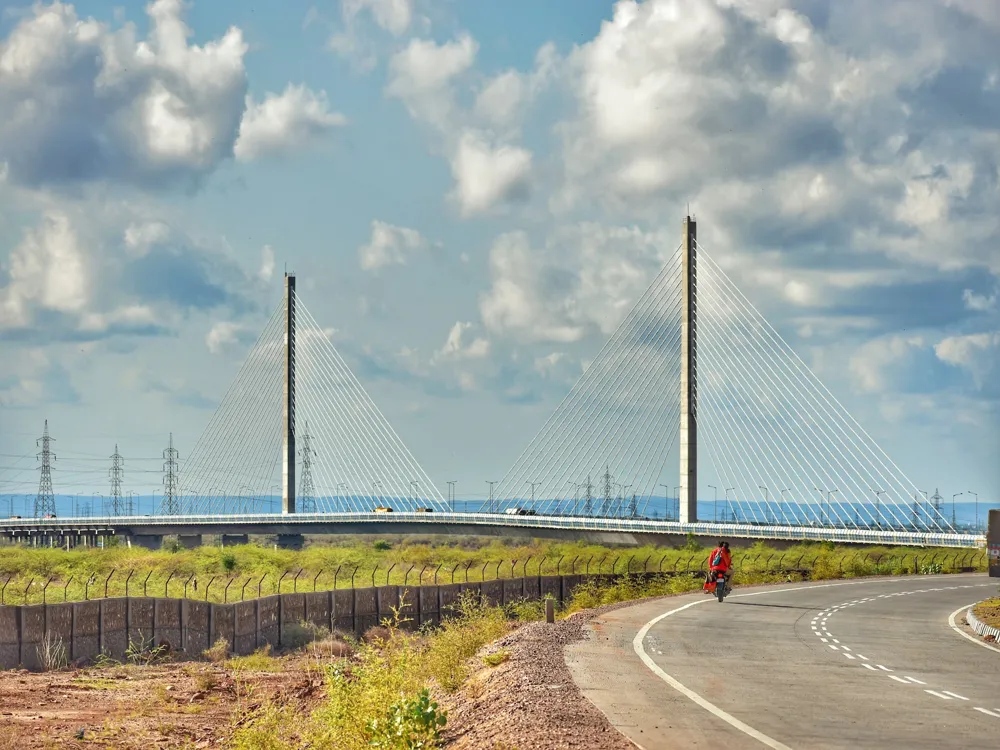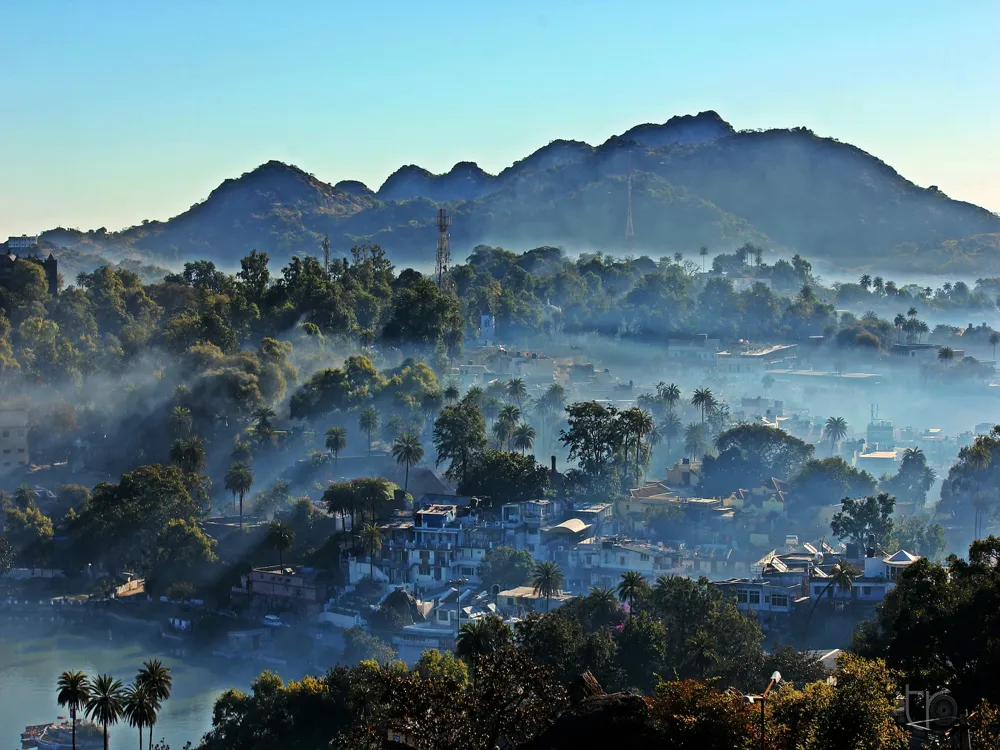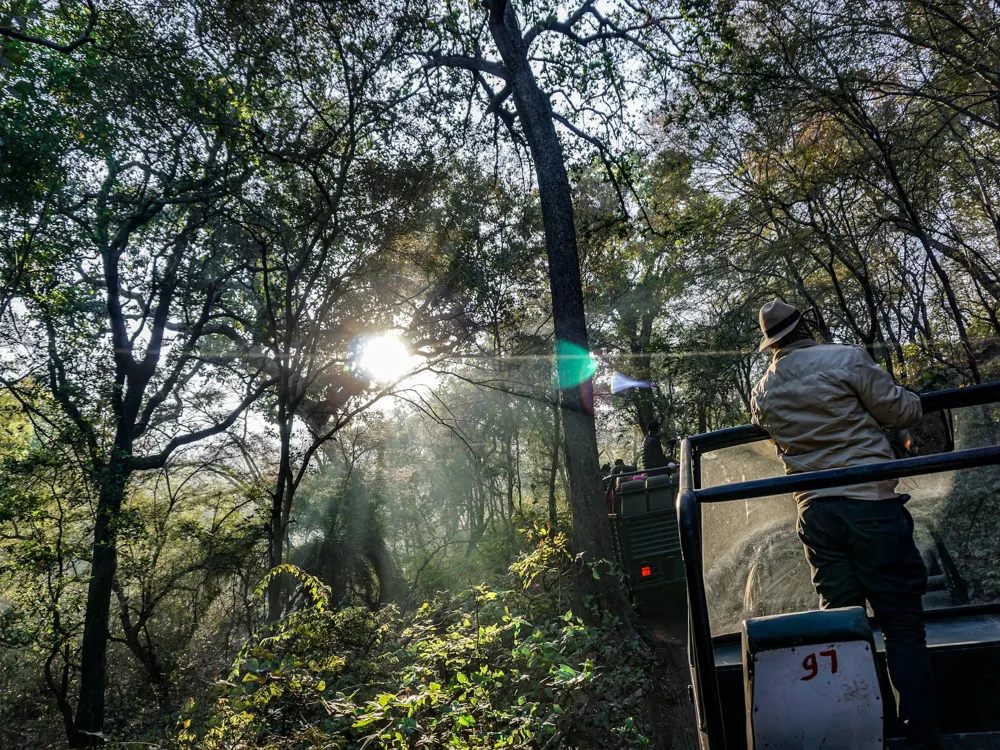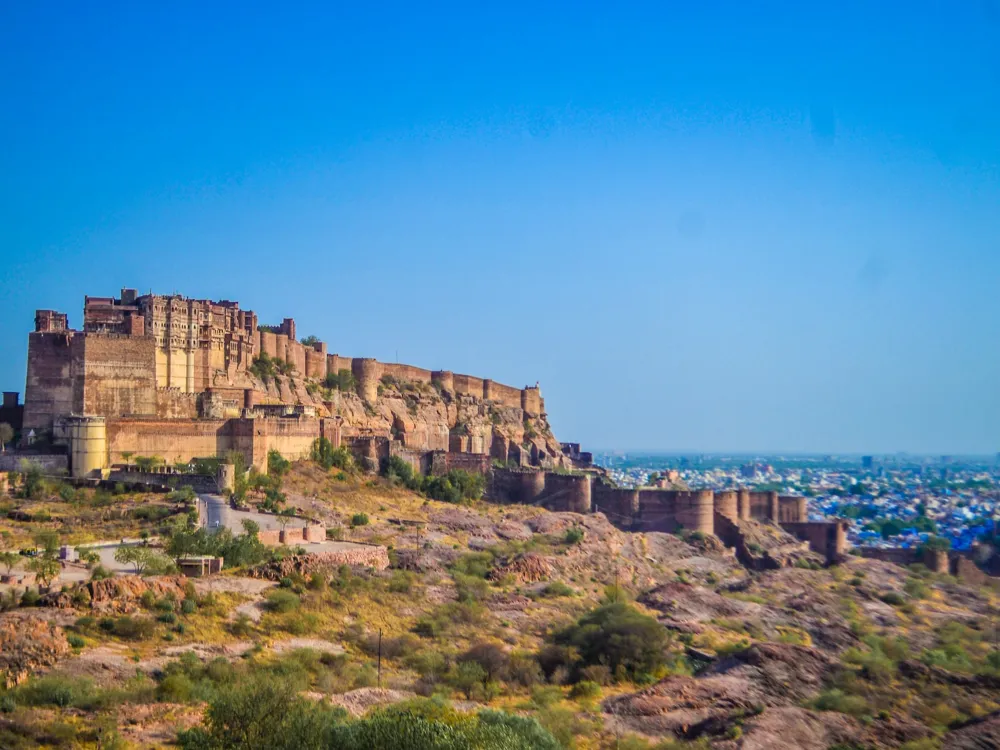Ana Sagar Lake, a quintessential emblem of Ajmer's historical grandeur, stands as a testament to the city's rich cultural and architectural heritage. Spanning over 13 kilometers, this man-made lake was constructed between 1135-1150 AD by Arnoraja, the grandfather of Prithviraj Chauvin. The lake's historical significance is further enhanced by its association with the legendary Prithviraj Chauvin, a figure deeply embedded in the folklore and history of Rajasthan. The lake's charm is not just in its historical roots but also in its picturesque setting. Encircled by the Aravalli Hills, it offers a serene retreat from the bustling city life. The Daulat Bagh Gardens, situated along its banks, provide a lush, green space perfect for leisurely strolls and picnics. The lake becomes a focal point during the monsoon, when it brims with rainwater, turning into a spectacular sight, attracting tourists and locals alike. Moreover, Ana Sagar Lake has played a vital role in the socio-economic fabric of Ajmer. It has been a source of water for the city and surrounding areas, contributing to the agricultural prosperity of the region. The lake also holds a special place in the hearts of the locals, serving as a venue for numerous cultural and religious events throughout the year. The architectural brilliance of Ana Sagar Lake is evident in its intricate design and engineering. The lake was created by damming the river Luni, and its catchment was constructed using materials and techniques that were revolutionary for their time. The embankment, known as Baradari, was built by Shah Jahan in 1637, adding a Mughal touch to the lake's architecture. This marble pavilion, with its series of arches and a panoramic view of the lake, exemplifies the Mughal architectural style. Adjacent to the Baradari is the Daulat Bagh, a garden that was laid out by Jahangir. This garden is a fine example of Mughal landscaping, featuring symmetrically arranged flowerbeds, water channels, and fountains. The juxtaposition of the garden with the lake creates a harmonious balance, showcasing the Mughal's mastery in creating aesthetically pleasing and functional spaces. The lake's design also incorporates several islands, which are accessible during low water levels. These islands were used for royal hunting parties and picnics, adding another layer of historical significance to the lake. The entire structure of Ana Sagar Lake reflects a blend of Rajput and Mughal architectural styles, making it a unique historical monument. The ideal time to visit Ana Sagar Lake is from October to March, when the weather in Ajmer is pleasant, and the lake is usually full post the monsoon season. Visitors can enjoy boat rides, explore the Daulat Bagh Gardens, and relax by the lakeside. Photography enthusiasts will find plenty of picturesque spots around the lake. Respect the local culture and traditions. Dress modestly and be mindful of your surroundings, especially during religious or cultural events. Always follow safety instructions, especially during boat rides. Keep an eye on children and stay within designated areas. Ana Sagar Lake is easily accessible from different parts of Ajmer. The city is well-connected by road, rail, and air. The nearest airport is Kishangarh Airport, about 30 kilometers away. Ajmer Junction railway station is the nearest railhead, connecting Ajmer to major cities across India. For those traveling by road, Ajmer is linked to major cities and towns in Rajasthan and neighboring states via national and state highways. Local transportation in Ajmer, including buses, auto-rickshaws, and taxis, can be used to reach Ana Sagar Lake conveniently. Read More:Overview of Ana Sagar Lake, Ajmer
Architecture of Ana Sagar Lake
Tips When Visiting Ana Sagar Lake
Best Time to Visit
Activities to Enjoy
Local Etiquette
Safety Tips
How To Reach Ana Sagar Lake
Ana Sagar Lake
Ajmer
Rajasthan
₹ 9,000 onwards
View ajmer Packages
Weather :
Label : Must Visit
Tags : Lake
Timings : 8:00 AM - 8:00 PM
Time Required : 1 to 2 hours
Entry Fees : No Entry Fee
Constructed in : 1135 AD - 1150 AD
Constructed By : Emperor Anaji Chauhan
Photography : Allowed
Planning a Trip? Ask Your Question
Ajmer Travel Packages
View All Packages For Ajmer
Top Hotel Collections for Ajmer

Private Pool

Luxury Hotels

5-Star Hotels

Pet Friendly
Top Hotels Near Ajmer
Other Top Ranking Places In Ajmer
View All Places To Visit In ajmer
Faq on Ajmer
What is Ana Sagar Lake?
Ana Sagar Lake is an artificial lake situated in the city of Ajmer, Rajasthan, India. It was built by Anaji Chauhan (grandfather of Prithviraj Chauhan) between 1135 and 1150 AD. The lake is named after him.
How big is Ana Sagar Lake?
The lake spans over an area of about 13 square kilometers and has a catchment area that extends to 7.12 square kilometers. Its size, however, can fluctuate with the seasons, expanding in the rainy season.
Are there any attractions around Ana Sagar Lake?
Yes, several attractions around Ana Sagar Lake enhance its beauty and appeal. Notable among them are the Daulat Bagh Gardens, a spacious garden by the lake, and the marble pavilions (Baradari) erected by Shah Jahan. There is also an island in the middle of the lake that is accessible by boat or water scooter.
Can visitors take boat rides on Ana Sagar Lake?
Yes, boat rides are a popular activity on Ana Sagar Lake. Visitors can enjoy pedal boats or motorboat rides, offering picturesque views of the surrounding area and a peaceful experience on the water.
What is the best time to visit Ana Sagar Lake?
The best time to visit Ana Sagar Lake is from October to March when the weather in Ajmer is cooler and more pleasant. This period avoids the harsh summer heat and the monsoon season, making it ideal for outdoor activities and sightseeing.
View ajmer Packages
Weather :
Label : Must Visit
Tags : Lake
Timings : 8:00 AM - 8:00 PM
Time Required : 1 to 2 hours
Entry Fees : No Entry Fee
Constructed in : 1135 AD - 1150 AD
Constructed By : Emperor Anaji Chauhan
Photography : Allowed
Planning a Trip? Ask Your Question
Ajmer Travel Packages
View All Packages For Ajmer
Top Hotel Collections for Ajmer

Private Pool

Luxury Hotels

5-Star Hotels

Pet Friendly
Top Hotels Near Ajmer
Other Top Ranking Places In Ajmer
Faq on Ajmer
What is Ana Sagar Lake?
Ana Sagar Lake is an artificial lake situated in the city of Ajmer, Rajasthan, India. It was built by Anaji Chauhan (grandfather of Prithviraj Chauhan) between 1135 and 1150 AD. The lake is named after him.
How big is Ana Sagar Lake?
The lake spans over an area of about 13 square kilometers and has a catchment area that extends to 7.12 square kilometers. Its size, however, can fluctuate with the seasons, expanding in the rainy season.
Are there any attractions around Ana Sagar Lake?
Yes, several attractions around Ana Sagar Lake enhance its beauty and appeal. Notable among them are the Daulat Bagh Gardens, a spacious garden by the lake, and the marble pavilions (Baradari) erected by Shah Jahan. There is also an island in the middle of the lake that is accessible by boat or water scooter.
Can visitors take boat rides on Ana Sagar Lake?
Yes, boat rides are a popular activity on Ana Sagar Lake. Visitors can enjoy pedal boats or motorboat rides, offering picturesque views of the surrounding area and a peaceful experience on the water.
What is the best time to visit Ana Sagar Lake?
The best time to visit Ana Sagar Lake is from October to March when the weather in Ajmer is cooler and more pleasant. This period avoids the harsh summer heat and the monsoon season, making it ideal for outdoor activities and sightseeing.







